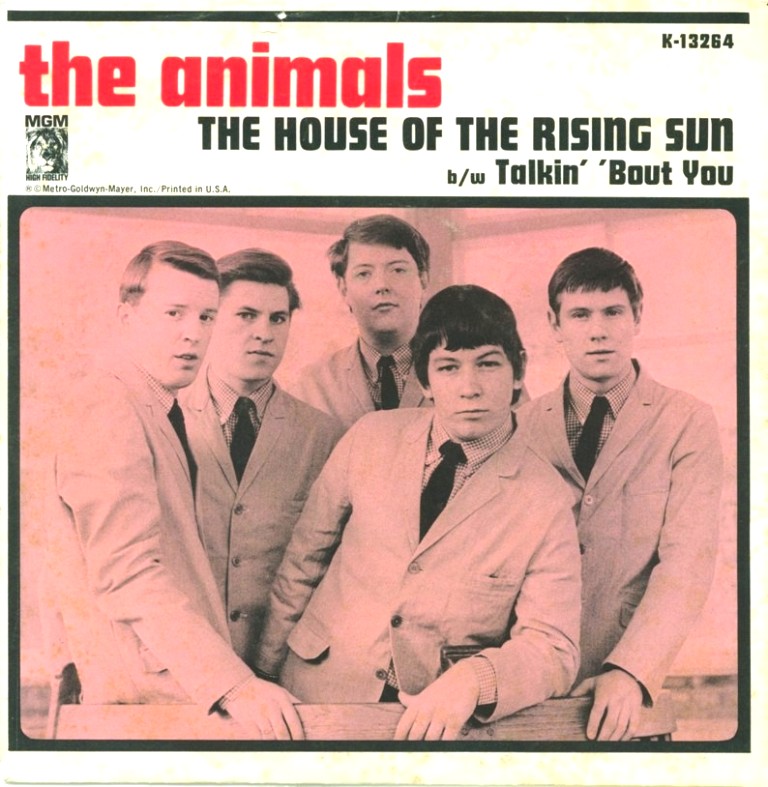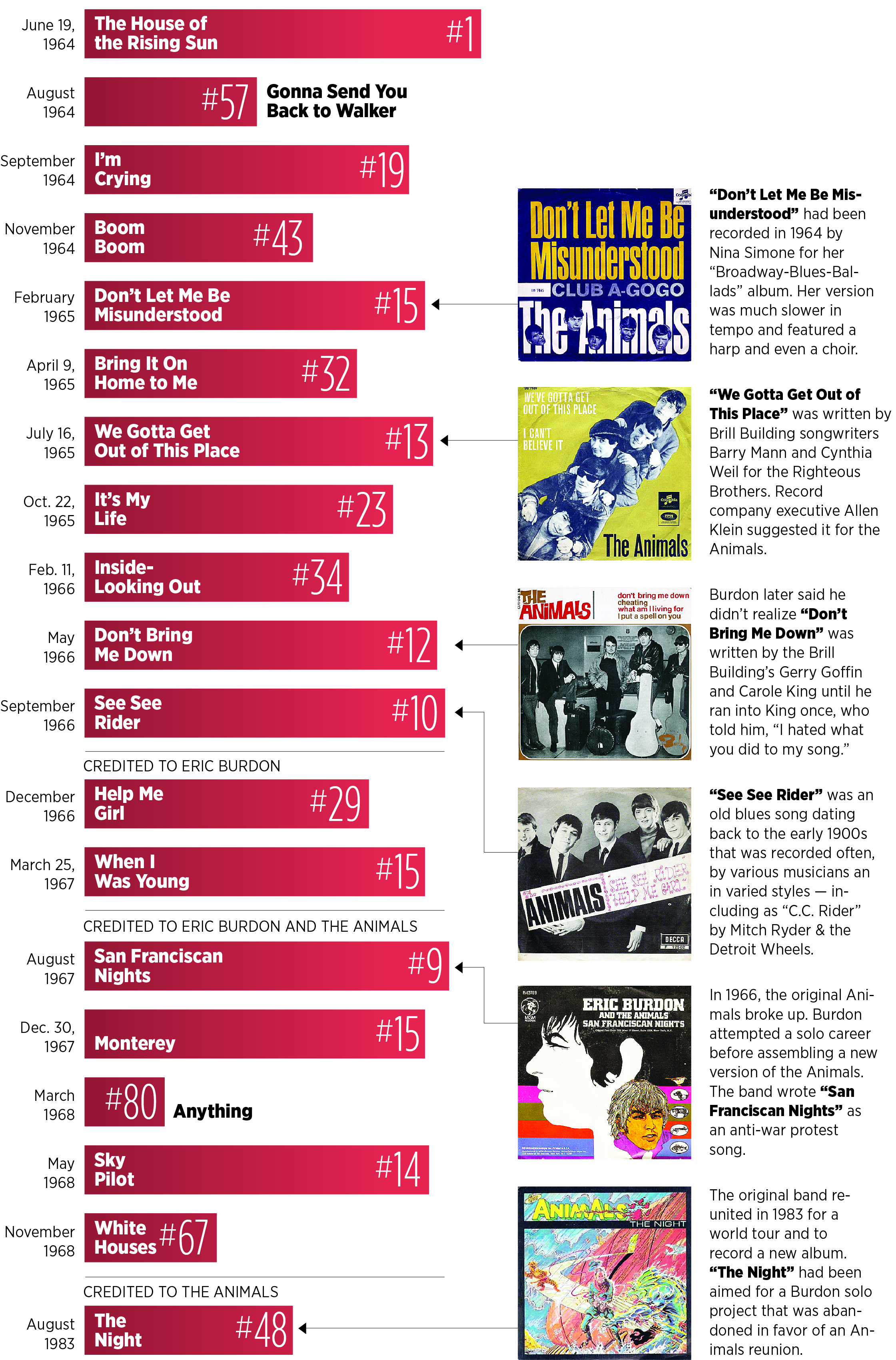
Animal House: The tale of the rising sun
The House of the Rising Sun
While the Beatles were making their hometown of Liverpool famous, the five members of the Animals were all from working-class families in the coal mining city of Newcastle, in northeast England.
Keyboard player Alan Price assembled a group in the early 1960s with other area teens to play local clubs and dances. The Alan Price Combo mostly played rhythm and blues, modifying songs to their own sensibilities.
Fans began telling the group they played like a bunch of wild animals, so they adopted the Animals as their name and talked the owner of a local club into serving as their manager.
In 1963, the Animals moved to London. Early the next year, they went on tour opening for Chuck Berry and found audiences especially enthusiastic about an old folk song they had radically reworked: “The House of the Rising Sun.”

The song has its roots in traditional folk songs from the early 1900s. Music historians aren’t sure what the song is about, but “Rising Sun” was the name of a prominent brothel that operated in New Orleans until it was closed in 1874. The original lyrics tell the story of a woman who spent years working there and is now in prison.
“The Rising Sun Blues” was first recorded by Appalachian music artists Clarence Ashley and Gwen Foster in 1933. It was recorded time and time again, by artists such as Roy Acuff, Woody Guthrie, Pete Seeger, Andy Griffith, Bob Dylan and Joan Baez. Lead Belly recorded two versions, the second of which was titled “House of the Rising Sun.”
The Animals enjoyed the song because it gave them something other than the standard rocker with which to close their shows. They recorded their version of it in May 1964. They reportedly recorded the single in one take, and after only 15 minutes of work in the studio.
The Animals' Singles Chart History
